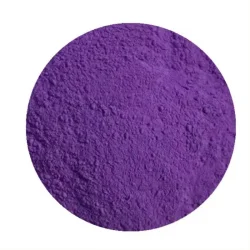Pigment for Colored Offset Inks
2024-06-15
Pigments used for colored offset inks play a crucial role in the quality and performance of the final printed product. Here’s an overview of the key aspects related to these pigments:
1. Types of Pigments:
- Organic Pigments: Derived from carbon-based molecules, these pigments offer a wide range of vibrant colors and are often used for their brightness and lightfastness.
- Inorganic Pigments: Typically metal oxides or salts, these pigments provide excellent opacity, stability, and durability. Common examples include titanium dioxide (white) and iron oxide (red, yellow, brown).
- Specialty Pigments: These include pearlescent pigments, fluorescent pigments, and metallic pigments, which impart unique visual effects to inks.
2. Properties and Requirements:
- Color Strength: The intensity of the color produced by the pigment.
- Compatibility: Pigments must be compatible with the ink formulation and printing process to ensure uniformity and stability.
- Lightfastness: Resistance to fading or changing color when exposed to light over time.
- Heat Stability: Ability to withstand the heat generated during the offset printing process without degradation.
- Viscosity Control: Pigments should not significantly alter the viscosity of the ink, which can affect printing quality.
3. Manufacturing and Quality Control:
- Pigments are manufactured under controlled conditions to ensure consistent particle size, purity, and color properties.
- Quality control measures include testing for color strength, particle size distribution, dispersion quality, and batch-to-batch consistency.
4. Application in Offset Printing:
- Offset inks are formulated by combining pigments with binders, solvents, and additives.
- Pigments must disperse evenly in the ink vehicle to prevent streaking or uneven color application on the printed substrate.
- They contribute to the ink’s drying properties, adhesion to the substrate, and overall print quality.
5. Environmental and Regulatory Considerations:
- Compliance with regulations regarding the use of certain pigments, especially those containing heavy metals or volatile organic compounds.
- Increasing emphasis on eco-friendly alternatives and sustainable sourcing of raw materials.
6. Suppliers and Availability:
- Pigment suppliers cater specifically to the printing industry, offering a variety of colors and types tailored to different ink formulations.
- Availability depends on regional regulations, market demand, and the specific requirements of ink manufacturers.
In conclusion, pigments for colored offset inks are essential components that impact the visual appeal, durability, and performance of printed materials. Ink manufacturers carefully select and formulate pigments to meet technical and aesthetic requirements while ensuring compliance with industry standards and regulations.



